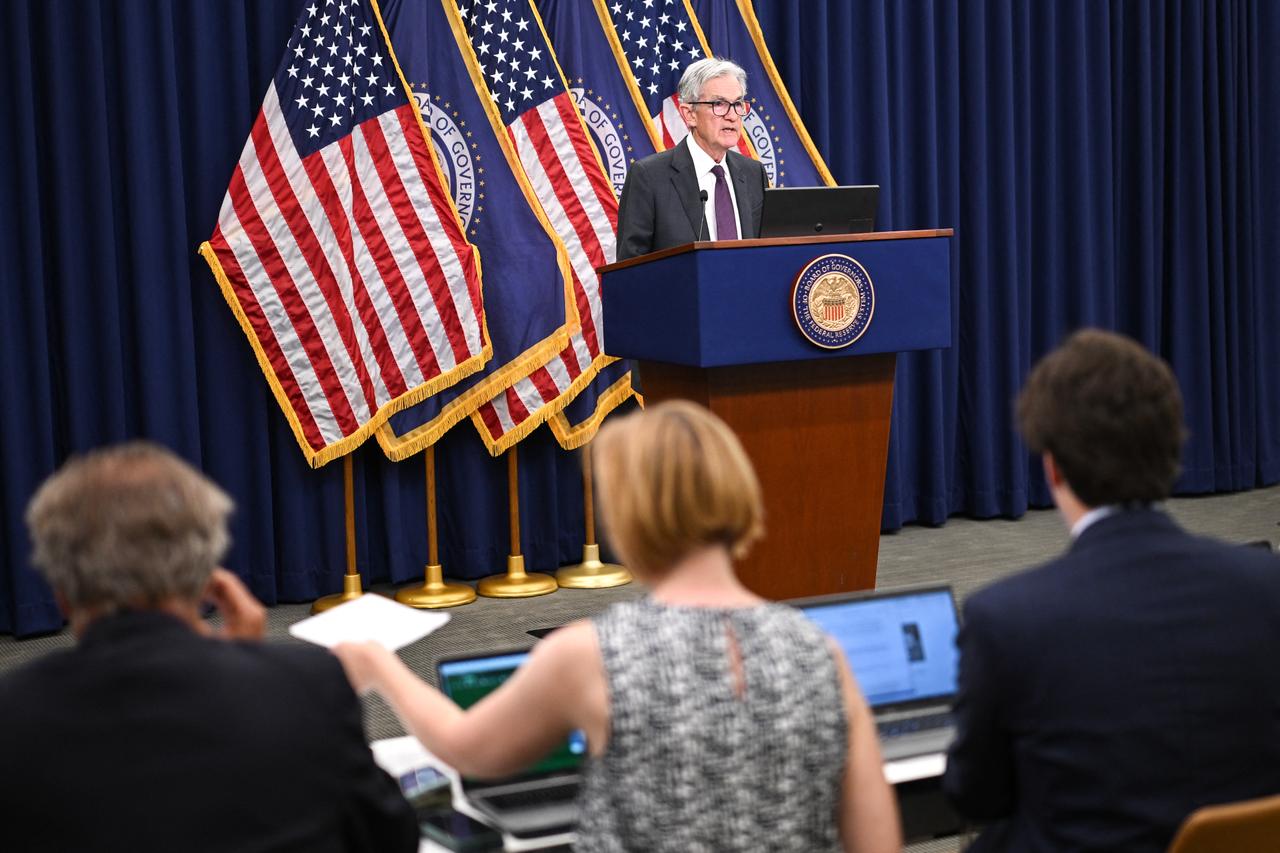
The United States Federal Reserve left its benchmark interest rate unchanged Wednesday, maintaining the target range at 4.25% to 4.50% for a fifth consecutive meeting, despite growing political pressure from President Donald Trump and rare dissent from two top central bank officials.
The Federal Open Market Committee’s (FOMC) decision was widely expected, as the Fed cited moderate economic activity and persistent inflation.
“Although swings in net exports continue to affect the data, recent indicators suggest that growth of economic activity moderated in the first half of the year,” the Fed said in its post-meeting statement. “Uncertainty about the economic outlook remains elevated,” it added, noting that inflation also remains somewhat elevated, while the unemployment rate remains low and labor market conditions solid.
The Fed said it would continue reducing its holdings of Treasury securities, agency debt and agency mortgage‑backed securities, and that it would “carefully” assess incoming data, the evolving outlook, and the balance of risks in determining the extent and timing of future rate changes.

The decision was not unanimous. Fed Governors Christopher Waller and Michelle Bowman dissented, advocating for a rate cut. It marked the first time since 1993 that two sitting governors have publicly broken with the committee’s majority. Both had previously expressed concern over weakening private sector job indicators and had signaled openness to easing as early as July.
“Dissents by two governors are rare and haven’t occurred since 1993,” said Nancy Vanden Houten, lead U.S. economist at Oxford Economics.
“It’s a high-wire act for the Fed, because they’re balancing a lot of risks without a net,” said Diane Swonk, chief economist at KPMG. “Some of the most tariff-sensitive sectors have begun to show price increases, but the bulk of any inflation bump due to tariffs is still ahead of us.”
Swonk also warned of vulnerabilities in the labor market, noting that even a small rise in layoffs could dampen consumer demand.
The Fed’s decision came amid renewed attacks from Trump, who has long called for substantial rate cuts. He has argued that high borrowing costs threaten economic growth and pointed to rate-cutting efforts by European central banks. Trump has demanded cuts of up to three percentage points, calling Fed Chair Jerome Powell “too late,” a “numbskull” and a “moron.”

On Wednesday, Trump said Powell “must now lower the rate,” citing stronger-than-expected GDP growth figures released earlier in the day.
The president’s pressure campaign intensified last week during a visit to the Fed’s renovation project in Washington. “The project would have been much better if it were never started,” Trump said, comparing it unfavorably to one of his own developments. “With all of that being said, let’s just get it finished and, even more importantly, LOWER INTEREST RATES!”
The administration has also criticized the renovation's costs and priorities, using it to further question the Fed's leadership.
Speculation has mounted over whether Trump might move to fire Powell. Though the president later said it was “highly unlikely,” he left the door open to action against the Fed chief, citing “possible” fraud.
The Fed previously held the benchmark rate at a post-pandemic high of 5.5% from July 2023 through September 2024, before easing it down to 4.5%. Since then, rates have remained steady despite shifting economic signals and mounting political pressure.
Analysts said Powell would likely sidestep direct questions about Trump during his post-decision press conference. His current term as Fed chair runs through May 2026.
Financial markets had largely priced in a hold on rates and were anticipating the internal disagreement. Still, multiple dissents from governors — who are seen as close to the Fed chair — could be interpreted as weakening Powell’s leadership.
“In this hyper-politicized environment, that’s perceived differently,” said Swonk. “Multiple dissents by governors... could signal an unintended view that they have lost confidence in the chairman.”
Other economists also pointed to rising risks.
“Tariff-induced price pressures are starting to filter through the economy,” said EY chief economist Gregory Daco. “Companies are citing weaker earnings and higher input costs, while elevated consumer prices are beginning to weigh on retail sales. More demand erosion is likely in the months ahead.”
Daco added that he expects Powell to “strike a tone of cautious patience” as the Fed navigates inflation, labor market pressures and political interference.